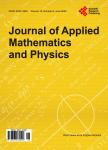The Dynamics of Wave-Particle Duality
作者机构:Department of Agricultural and Environmental Sciences (DISAA) University of Milan Milano Italy
出 版 物:《Journal of Applied Mathematics and Physics》 (应用数学与应用物理(英文))
年 卷 期:2018年第6卷第9期
页 面:1840-1859页
学科分类:07[理学] 0701[理学-数学] 070101[理学-基础数学]
主 题:Helmholtz Equation Wave Potential Hamilton-Jacobi Equation Wave Mechanics De Broglie’s Duality Matter Waves Guidance Laws Schrodinger Equations Klein-Gordon Equation
摘 要:Both classical and wave-mechanical monochromatic waves may be treated in terms of exact ray-trajectories (encoded in the structure itself of Helmholtz-like equations) whose mutual coupling is the one and only cause of any diffraction and interference process. In the case of Wave Mechanics, de Broglie’s merging of Maupertuis’s and Fermat’s principles (see Section 3) provides, without resorting to the probability-based guidance-laws and flow-lines of the Bohmian theory, the simple law addressing particles along the Helmholtz rays of the relevant matter waves. The purpose of the present research was to derive the exact Hamiltonian ray-trajectory systems concerning, respectively, classical electromagnetic waves, non-relativistic matter waves and relativistic matter waves. We faced then, as a typical example, the numerical solution of non-relativistic wave-mechanical equation systems in a number of numerical applications, showing that each particle turns out to “dances a wave-mechanical dance around its classical trajectory, to which it reduces when the ray-coupling is neglected. Our approach reaches the double goal of a clear insight into the mechanism of wave-particle duality and of a reasonably simple computability. We finally compared our exact dynamical approach, running as close as possible to Classical Mechanics, with the hydrodynamic Bohmian theory, based on fluid-like “guidance laws.



